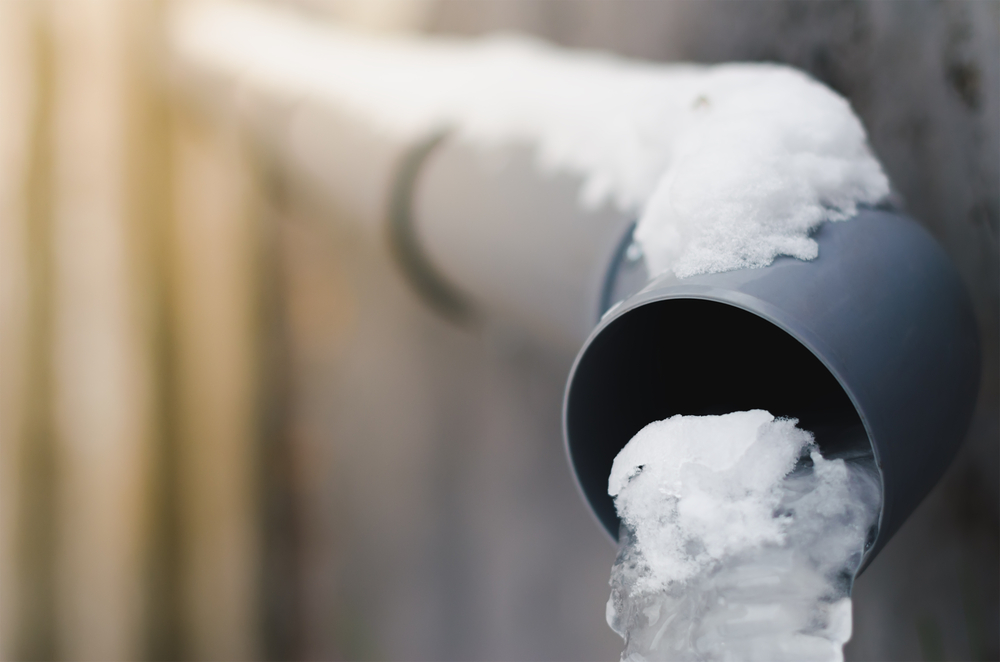We have stumbled upon the article about Helpful Tips to Prevent Frozen Pipes this Winter directly below on the net and reckoned it made perfect sense to talk about it with you on this page.

Cold weather can wreak havoc on your plumbing, particularly by freezing pipes. Here's how to prevent it from happening and what to do if it does.
Intro
As temperature levels decrease, the danger of frozen pipes increases, possibly bring about pricey repair services and water damage. Understanding just how to avoid frozen pipelines is vital for home owners in chilly climates.
Avoidance Tips
Insulating at risk pipes
Cover pipes in insulation sleeves or make use of heat tape to shield them from freezing temperature levels. Concentrate on pipes in unheated or external areas of the home.
Home heating methods
Maintain interior areas sufficiently heated, particularly locations with pipes. Open up cabinet doors to permit warm air to distribute around pipelines under sinks.
Just how to identify frozen pipes
Look for reduced water circulation from faucets, uncommon smells or noises from pipelines, and noticeable frost on subjected pipes.
Long-Term Solutions
Architectural modifications
Take into consideration rerouting pipelines far from outside wall surfaces or unheated areas. Add extra insulation to attics, basements, and crawl spaces.
Upgrading insulation
Buy high-quality insulation for pipes, attics, and wall surfaces. Correct insulation aids keep constant temperatures and lowers the threat of frozen pipelines.
Securing Outdoor Plumbing
Yard hose pipes and outside taps
Disconnect and drain pipes garden hose pipes prior to winter months. Install frost-proof faucets or cover exterior faucets with protected caps.
Understanding Icy Pipelines
What creates pipes to freeze?
Pipes ice up when exposed to temperatures listed below 32 ° F (0 ° C) for expanded durations. As water inside the pipelines freezes, it broadens, putting pressure on the pipeline wall surfaces and possibly creating them to burst.
Risks and damages
Frozen pipes can lead to supply of water disturbances, residential or commercial property damage, and expensive repairs. Burst pipelines can flooding homes and create considerable architectural damage.
Signs of Frozen Pipes
Determining frozen pipelines early can avoid them from bursting.
What to Do If Your Pipelines Freeze
Immediate activities to take
If you think icy pipes, keep faucets open to soothe stress as the ice melts. Utilize a hairdryer or towels soaked in hot water to thaw pipes gradually.
Conclusion
Protecting against frozen pipelines requires aggressive measures and fast actions. By recognizing the causes, signs, and safety nets, homeowners can secure their pipes throughout winter.
5 Ways to Prevent Frozen Pipes
Drain Outdoor Faucets and Disconnect Hoses
First, close the shut-off valve that controls the flow of water in the pipe to your outdoor faucet. Then, head outside to disconnect and drain your hose and open the outdoor faucet to allow the water to completely drain out of the line. Turn off the faucet when done. Finally, head back to the shut-off valve and drain the remaining water inside the pipe into a bucket or container. Additionally, if you have a home irrigation system, you should consider hiring an expert to clear the system of water each year.
Insulate Pipes
One of the best and most cost-effective methods for preventing frozen water pipes is to wrap your pipes with insulation. This is especially important for areas in your home that aren’t exposed to heat, such as an attic. We suggest using foam sleeves, which can typically be found at your local hardware store.
Keep Heat Running at 65
Your pipes are located inside your walls, and the temperature there is much colder than the rest of the house. To prevent your pipes from freezing, The Insurance Information Institute suggests that you keep your home heated to at least 65 degrees, even when traveling. You may want to invest in smart devices that can keep an eye on the temperature in your home while you’re away.
Leave Water Dripping
Moving water — even a small trickle — can prevent ice from forming inside your pipes. When freezing temps are imminent, start a drip of water from all faucets that serve exposed pipes. Leaving a few faucets running will also help relieve pressure inside the pipes and help prevent a rupture if the water inside freezes.
Open Cupboard Doors
Warm your kitchen and bathroom pipes by opening cupboards and vanities. You should also leave your interior doors ajar to help warm air circulate evenly throughout your home.

I ran across that article on Prevent Frozen Pipes while doing a lookup on the internet. For those who enjoyed our blog entry please don't forget to pass it around. Kudos for being here. Come back soon.
Schedule And Pricing
Comments on “Preventing Frozen Plumbing: Best Tips for Winter”